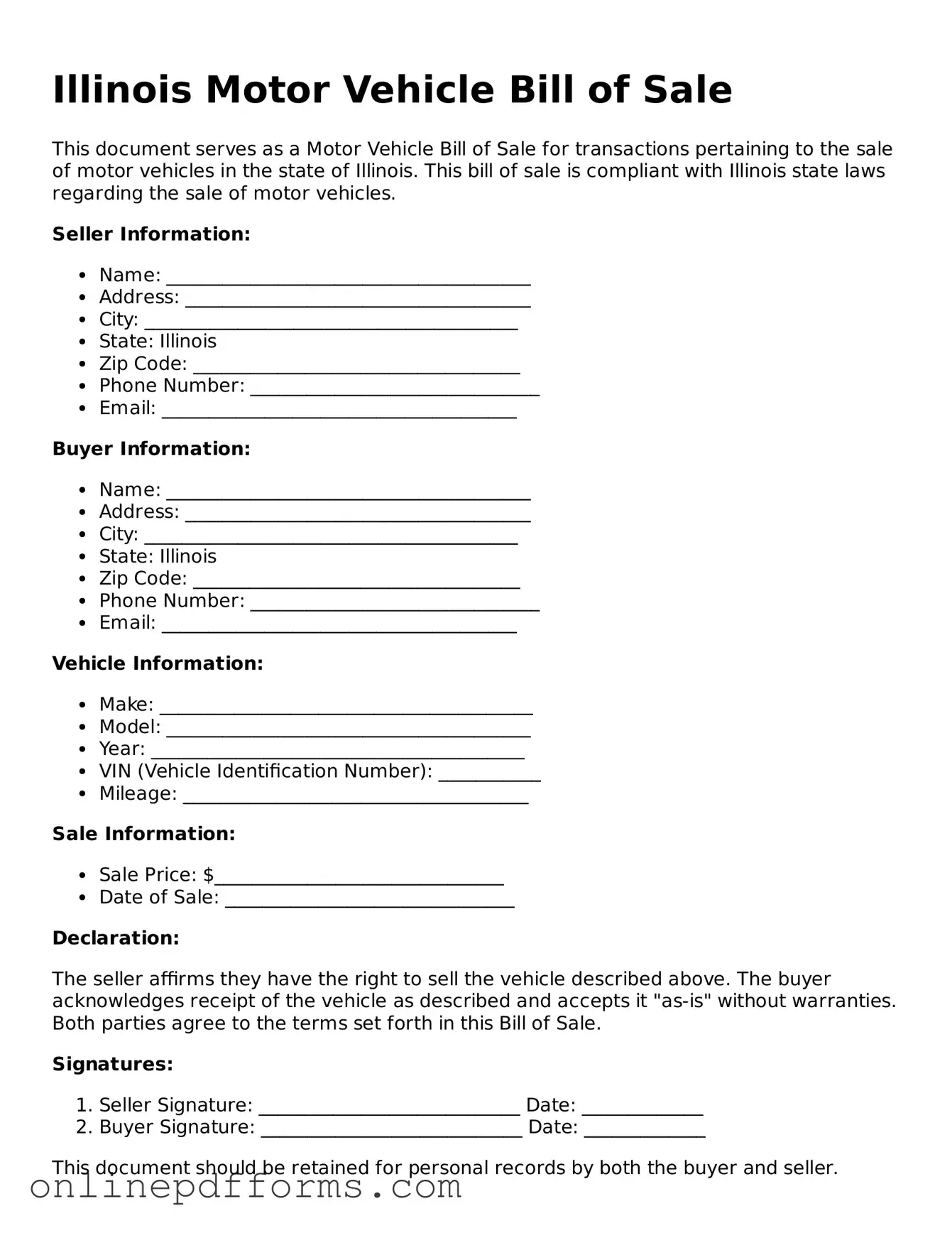The Illinois Vehicle Title Application is similar to the Motor Vehicle Bill of Sale as both documents facilitate the transfer of ownership for a vehicle. The title application is submitted to the Illinois Secretary of State and requires information about the vehicle and its new owner. Like the Bill of Sale, it serves as proof of the transaction and is necessary for registering the vehicle in the new owner's name. Both documents must include details such as the vehicle identification number (VIN), make, model, and sale price to ensure clarity in ownership transfer.
The Vehicle Registration Application is another document that shares similarities with the Motor Vehicle Bill of Sale. This application is required to register a vehicle in Illinois and often references the Bill of Sale as proof of ownership. When registering a vehicle, the new owner must provide the Bill of Sale along with the registration application to confirm the purchase. Both documents work together to establish legal ownership and allow the vehicle to be legally driven on public roads.
The Illinois Title Transfer Form is closely related to the Motor Vehicle Bill of Sale. This form is specifically used when transferring the title of a vehicle from one owner to another. While the Bill of Sale documents the sale, the Title Transfer Form officially records the change in ownership with the state. Both documents require similar information about the vehicle and the parties involved, ensuring that the transfer is legitimate and recognized by the state authorities.
The Odometer Disclosure Statement is another important document that complements the Motor Vehicle Bill of Sale. This statement is required to disclose the vehicle's mileage at the time of sale, helping to prevent fraud related to odometer tampering. When completing the Bill of Sale, sellers must often include this disclosure to provide transparency regarding the vehicle's condition. Both documents work in tandem to protect buyers and ensure fair transactions.
The Affidavit of Vehicle Ownership can also be seen as similar to the Motor Vehicle Bill of Sale. This affidavit is used in cases where a seller cannot provide a title, allowing the buyer to prove ownership. In such situations, the Bill of Sale may still be used to document the sale, while the affidavit provides additional assurance to the buyer. Both documents serve to establish ownership and facilitate the transfer process in unique circumstances.
The Illinois Sales Tax Transaction Return is another related document. When a vehicle is sold, sales tax must typically be paid based on the sale price. The Bill of Sale provides the necessary information to complete this tax return. Both documents are essential for ensuring that the appropriate taxes are collected and that the transaction is compliant with state regulations. This connection highlights the financial responsibilities that come with vehicle ownership transfer.
Lastly, the Vehicle Insurance Policy is similar in that it is often required once ownership is transferred. After completing the Motor Vehicle Bill of Sale, the new owner must secure insurance for the vehicle before it can be legally driven. While the Bill of Sale documents the sale, the insurance policy protects the new owner against potential liabilities. Both documents are critical components of responsible vehicle ownership and must be managed appropriately.
